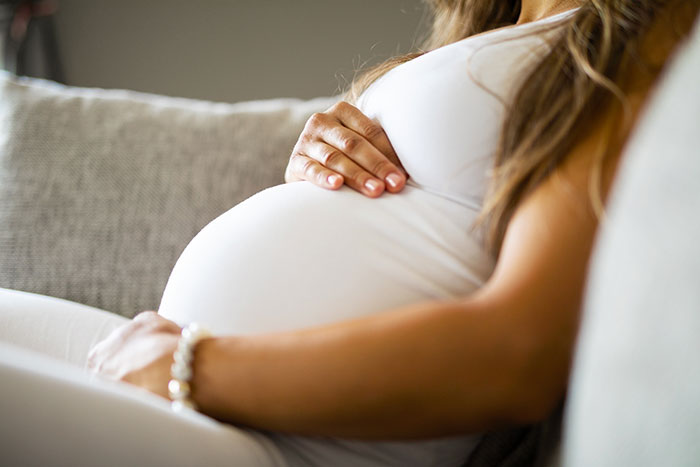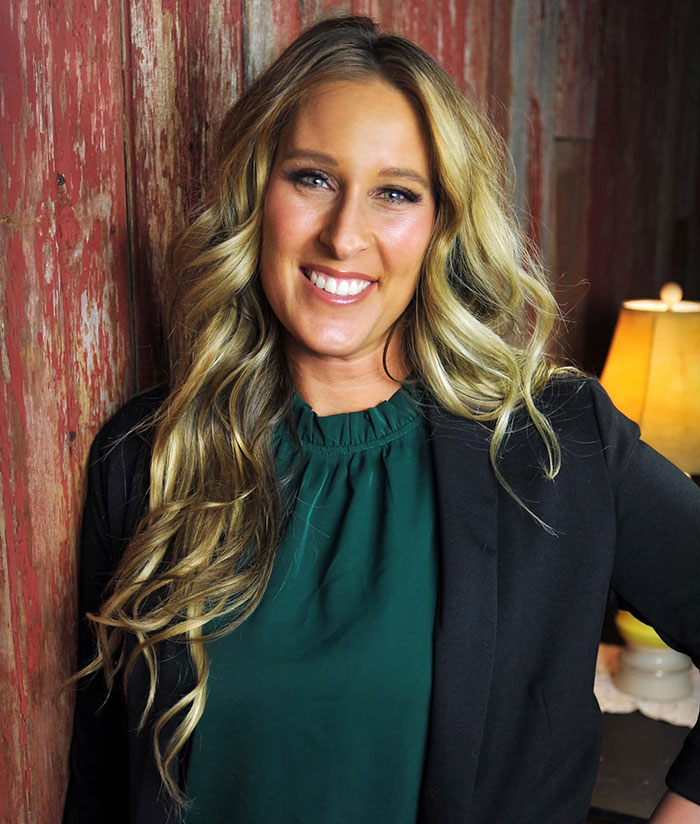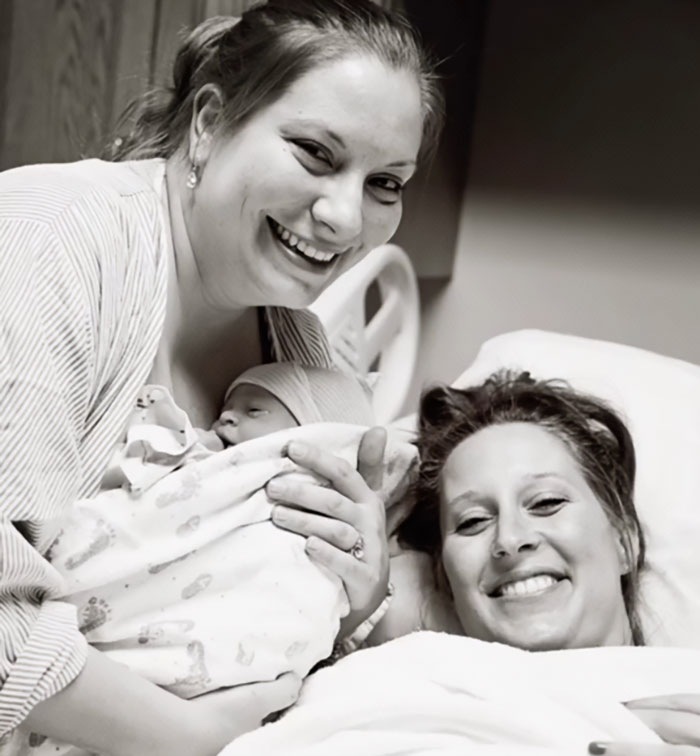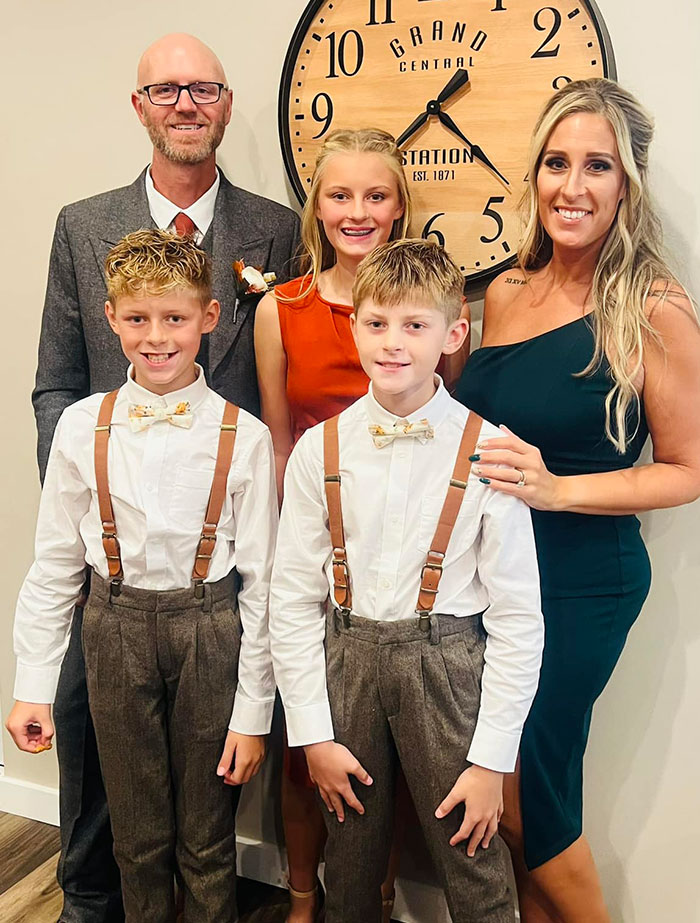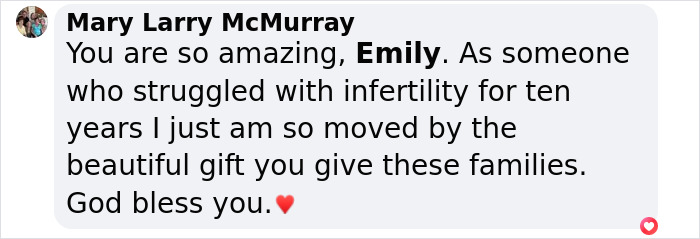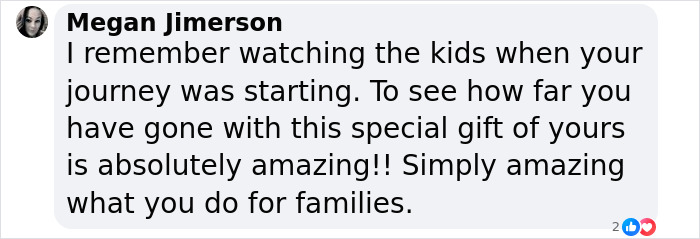Three of those babies were her biological children: Mckenna, 13, Jack, 11, and Charlie, 10, whom she shares with her husband, Max. The 37-year-old mom has acted as a gestational carrier for many parents who otherwise wouldn’t have been able to complete their families. “I am so proud to be able to do this for other people. I know my time is very limited as we’re getting closer and closer to how many people I’m able to help, but still, I’m young enough, and I’m healthy enough to be able to do so,” Westerfield told Today. “I’m probably the unicorn in this industry,” the woman, who is currently 28 weeks pregnant, said.
Share iconEmily Westerfield, who has acted as a gestational carrier for many parents, is currently pregnant with baby No. 11
Image credits: stock.adobe.com Would she carry another child after baby No. 11 is born? “In a heartbeat.” The first family that the surrogacy “unicorn” offered to help was actually her own extended family. In 2010, Westerfield offered to carry her husband’s cousin’s embryo after she kept having “loss after loss” due to secondary infertility. Secondary infertility is when someone who has previously given birth is unable to conceive or carry a pregnancy to term, according to the Cleveland Clinic. It’s just as common as primary infertility, affecting about 11% of couples in the United States. Feeling “guilty” about being able to conceive all of her children with ease, Westerfield offered to serve as her cousin’s surrogate. However, the couple declined because “they did not feel that surrogacy was the path that they wanted to take.”
“I’m probably the unicorn in this industry,” the woman, who is currently 28 weeks pregnant, said
Share icon Image credits: Emily Westerfield Still, the resident of Celina, Ohio, knew there were other families who had been waiting to hear that proposal for years. “I knew that there were probably so many other people in the world who needed help in a very similar way. Maybe I could help.” In gestational surrogacy, the surrogate (or carrier of the pregnancy) isn’t genetically related to the fetus because they didn’t provide the egg used for fertilization. In most cases, at least one parent is genetically related to the child, but the surrogate isn’t. The embryo is created through IVF (in vitro fertilization) using the eggs and sperm of the intended parents (or donors). Then, it’s transferred to the surrogate, who carries the pregnancy.
Westerfield delivered healthy babies in 2011, 2013, 2014, 2015, 2017, 2018, 2021, and 2022
Share icon Image credits: carryingdreams Her husband wasn’t initially on board with the idea. While pregnant with her eldest child, Charlie, she brought up to him the possibility of becoming a gestational carrier. And then she spoke about it again and again. “I was shot down by him so many times,” Westerfield explained. “The more and more I shared to educate him, I think the more and more he felt comfortable with it. Or he just got sick of me nagging.” After Charlie was born, the mom joined an online forum that no longer exists, which she describes as “almost like a Craiglists of everybody in the infertility community.” “I created a profile and just put myself out there. I was overwhelmed with the response and just inundated with emails and queries. “The more and more that I got into this, the more I realized there’s so many more people out there that need the help than the people that are willing to help.” Deciding who to help wasn’t easy; for every couple that she helped, there would be another that would be left waiting to have a baby. Ultimately, Westerfield settled on one family that lived three hours away from her house. In 2015, she delivered the couple’s third child, a girl. “That’s when everything started.” Telling them the news “was so emotionally overwhelming and exciting and nerve-wracking, all at the same time,” Westerfield shared.
“I get attached like a loving aunt,” said the mother, whose goal is to help intended parents start, build, or complete their families
A post shared by Carrying Dreams (@carrying.dreams) “I noticed that as soon as I had the first one, I wanted to do this again. It was almost just like, ‘Now who else can I help?’” She delivered healthy babies in 2011, 2013, 2014, 2015, 2017, 2018, 2021, and 2022, as per Today, all after “wonderful pregnancies.” Despite the belief that parting with babies after carrying them for nine months is emotionally difficult, Westerfield says it’s not actually the case. “I get attached like a loving aunt.” After learning about a couple’s struggles to start, build, or complete their families, “you want to hand that baby over when you get to the end of this.” Her “aunt” duties include occasionally staying in touch with the parents via social media and sending birthday gifts to the children she carried.
She also has three biological children of her own: Mckenna, 13, Jack, 11, and Charlie, 10
Share icon Image credits: Emily Westerfield In August 2023, the 37-year-old started her own surrogacy agency, Carrying Dreams. “Specializing in surrogacy and egg donation, our focus is on spreading joy, love, education, and resources. We work globally with intended parents and connect them with surrogates and egg donors in the United States, guiding them through every step of this beautiful journey.” After her July delivery, Westerfield is determined to persist in assisting intended parents to grow their families. “I’ll continue to help as long as my body and my family allows me to.”
“She is an angel for helping others,” someone commented
Share icon Share icon Share icon Share icon Share icon Share icon Share icon Share icon Share icon Share icon Share icon Anyone can write on Bored Panda. Start writing! Follow Bored Panda on Google News! Follow us on Flipboard.com/@boredpanda!
